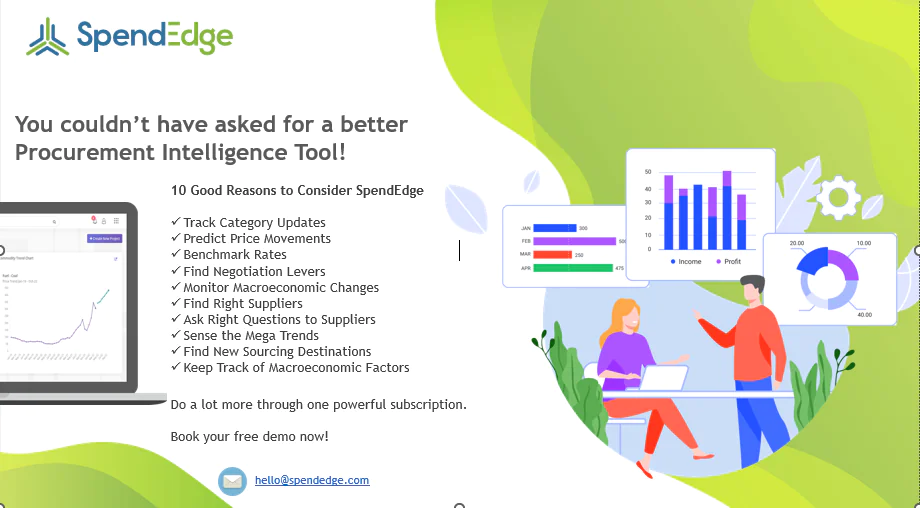By: Manpreet Kaur
Key Takeaways
- Emphasis on Digitalization and Automation:
The supply chain industry is rapidly adopting advanced technologies like AI, machine learning, and IoT to enhance efficiency, reduce costs, and minimize errors through automation and digitization. - Shift Towards Eco-Friendly Logistics:
Sustainability is becoming a central focus, with increased use of electric and hybrid vehicles, eco-friendly packaging, and energy-efficient operations to reduce carbon footprints and meet regulatory and consumer demands. - Focus on Resilience and Risk Management:
Companies are prioritizing resilience by diversifying suppliers, embracing local sourcing, and implementing robust risk management strategies to better withstand disruptions and ensure agile, robust supply chains. - Innovations in Last-Mile Delivery:
New technologies such as drones, autonomous delivery vehicles, and smart routing algorithms are set to revolutionize last-mile delivery, improving efficiency, reducing costs, and enhancing customer satisfaction.
In the ever-evolving landscape of global commerce, supply chain and transportation play pivotal roles in ensuring the seamless flow of goods and services. As we step into 2024, several trends are shaping the industry, driven by technological advancements, sustainability concerns, and the need for resilience in the face of unexpected disruptions.
Transportation role in supply chain management
Few supply chain operations are as important to your company as the one you choose for transportation. Delivery procedures guarantee that items are delivered to and from your location efficiently and on schedule. It’s critical to incorporate transportation into your supply chain management strategy due to its significance for the success of your company. Transportation is so crucial that it is regarded as one of the three main pillars of supply chain management.In a supply chain, transportation is the movement of goods from one place to another. It starts at the beginning of the chain when raw materials are supplied to the warehouse and goes all the way to the end user when the customer’s order is delivered right to their door. Warehouse managers should look into transportation within their supply chains due to its significance. For a scenario where transportation can account for as much as 60% of total operational costs—a sizeable component of a company’s supply chain expenditures—this is ultimately the only option to achieve lower overall costs.
Let’s delve into the key supply chain and transportation trends that are set to make waves in 2024.

Digitalization and Automation:
The digitization of supply chain processes is not a new concept, but its pace and scope are accelerating. In 2024, businesses are expected to leverage advanced technologies such as artificial intelligence (AI), machine learning, and the Internet of Things (IoT) to optimize their supply chain operations. Automation, from smart warehouses to autonomous vehicles, will become more prevalent, reducing costs, enhancing efficiency, and minimizing errors.
Eco-Friendly Logistics:
Sustainability is no longer a mere buzzword; it’s a fundamental consideration for businesses across industries. In 2024, the supply chain and transportation sectors will witness a significant push towards eco-friendly practices. This includes the adoption of electric and hybrid vehicles, eco-friendly packaging materials, and energy-efficient warehouse operations. Companies are recognizing the importance of reducing their carbon footprint and aligning with environmentally conscious practices to meet consumer expectations and regulatory standards.
Request a proposal of our services at SpendEdge to enhance your supply chain and procurement process
Resilience and Risk Management:
The events of the past few years, including the global pandemic and geopolitical tensions, have underscored the importance of building resilient supply chains. In 2024, companies will focus on diversifying their supplier base, embracing local sourcing, and implementing risk management strategies to mitigate disruptions. This proactive approach aims to ensure that supply chains remain agile and robust, capable of adapting to unforeseen challenges.
Last-Mile Innovations:
The last mile of delivery has long been a bottleneck in the supply chain, impacting both cost and customer satisfaction. In 2024, we can expect innovations in last-mile delivery, including the use of drones, autonomous delivery vehicles, and smart routing algorithms. These technologies aim to streamline the final leg of the delivery process, reducing delivery times and costs while improving the overall customer experience.
Data Security and Cybersecurity:
As supply chains become increasingly digitized, the importance of data security cannot be overstated. With sensitive information flowing through interconnected systems, companies will prioritize robust cybersecurity measures to safeguard against cyber threats. This includes implementing encryption, secure cloud storage solutions, and regular audits to identify and address vulnerabilities in the digital infrastructure.
Conclusion
The year 2024 promises to be a transformative period for the supply chain and transportation industry. Embracing digitalization, sustainability, and resilience will be critical for businesses seeking to stay ahead in a rapidly changing environment. By leveraging cutting-edge technologies and adopting forward-thinking strategies, companies can navigate the challenges and seize the opportunities that lie ahead, ensuring a more efficient, transparent, and sustainable future for global supply chains.

Get a free trial of our professional services and see how it helps your business
Author’s Details
Manpreet Kaur
Assistant Manager Presales – Sourcing and Procurement Intelligence
Manpreet is a presales specialist at Infiniti Research and has expertise in sales, business strategy execution, and innovative solution design. She is actively involved in supporting clients from F&B, CPG, Healthcare, Pharma, Chemicals, BFSI, Oil & Gas and Automotive sectors.




